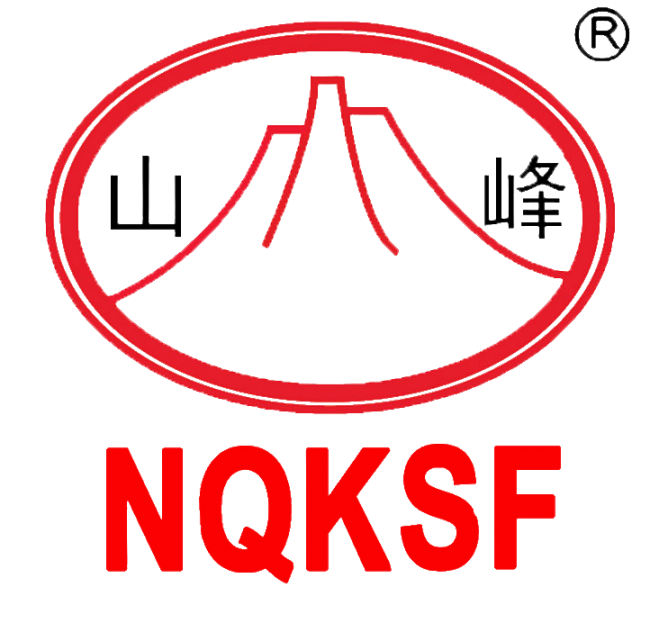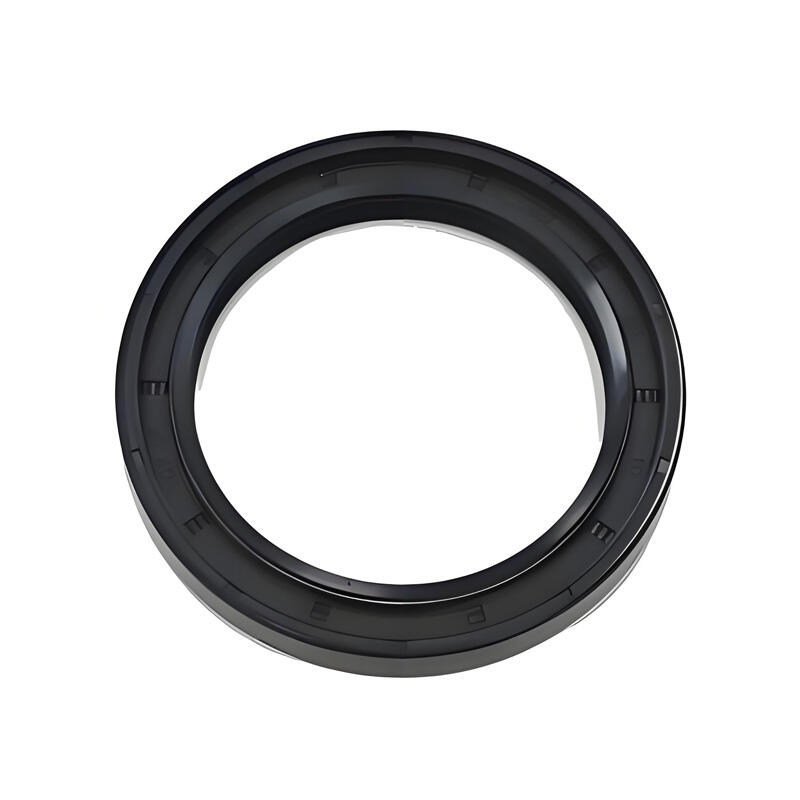Endüstriyel Uygulamalarda Basınç Dirençli Yağ Contalarını Anlamak
Endüstriyel makine dünyasında, basınca dayanıklı yağ contaları, yüksek basınç koşullarında sıvı sızıntısından korurken optimal performansı koruyan kritik bileşenlerdir. Bu özel sızdırmazlık çözümleri, kirlenmeyi önlemekte, yağlayıcıları muhafaza etmekte ve mekanik sistemlerin ömrünü uzatmada hayati bir rol oynar. Pazarda birçok seçenek bulunmasından dolayı uygun basınca dayanıklı yağ kaplamaları makine verimliliği ve güvenilirliği üzerinde doğrudan etkisi olan çok sayıda faktörü dikkate alarak dikkatli bir seçim yapılmasını gerektirir.
Yağ Contası Seçiminde Temel Faktörler
Çalışma Basıncı ve Sıcaklık Gereksinimleri
Basınca dayanıklı yağ contaları seçerken dikkate alınması gereken temel husus, sisteminizin çalışma basıncı özelliklerini anlamaktır. Farklı uygulamalar, genel endüstriyel ekipmanlarda orta düzeyde olan basınçlardan hidrolik sistemlerdeki aşırı yüksek basınçlara kadar değişen basınca dayanıklılık seviyeleri gerektirir. Mühendislerin, makinelerinin çalışma sırasında maruz kalacağı maksimum ve minimum basınç aralıklarını dikkatlice değerlendirmesi gerekir.
Sıcaklık koşulları da conta seçiminde eşit derecede kritik bir rol oynar. Basınca dayanıklı yağ contaları, uygulamanın tüm sıcaklık aralığında bütünlüğünü korumalıdır. Yüksek sıcaklıklar, conta malzemesinin özelliklerini etkileyebilir ve erken aşınmaya veya başarısızlığa neden olabilir. Conta malzemelerini seçerken hem sürekli çalışma sıcaklıklarını hem de ara sıra meydana gelen sıcaklık artışlarını göz önünde bulundurun.
Malzeme Uyumluluğu ve Kimyasal Direnç
Sızdırmazlığı yapılan akışkanların kimyasal bileşimi, basınca dayanıklı yağ contalarının seçimini önemli ölçüde etkiler. Farklı elastomerler ve malzemeler, yağlar, gresler ve diğer endüstriyel akışkanlarla uyumluluk açısından değişik seviyeler gösterir. Örneğin, nitril (NBR) mineral yağlara ve hidrokarbonlara karşı mükemmel direnç sunarken, florokarbon (FKM) agresif kimyasallar ve yüksek sıcaklıklarla birlikte üstün performans sağlar.
Conta malzemesi ile çalışma akışkanı arasındaki olası kimyasal etkileşimleri dikkate alın. Bazı kombinasyonlar zamanla conta şişmesine, büzülmesine veya bozulmasına neden olabilir. Benzersiz akışkan bileşimleriyle çalışırken her zaman üretici spesifikasyonları aracılığıyla malzeme uyumluluğunu doğrulayın ya da testler yapın.
Gelişmiş Tasarım Hususları
Conta Profili ve Geometrisi
Basınca dayanıklı yağ contalarının geometrik tasarımı, değişken basınç koşulları altındaki performanslarını önemli ölçüde etkiler. Modern conta profilleri, basınca duyarlı dudaklar, yardımcı sızdırmazlık elemanları ve optimize edilmiş temas yüzeyleri gibi gelişmiş özellikler içerir. Bu tasarım unsurları, etkili sızdırmazlığı korurken sürtünmeyi ve aşınmayı en aza indirmek için birlikte çalışır.
Conta profillerini seçerken montaj alanı ve mil gereksinimlerini göz önünde bulundurun. Bazı uygulamalarda kompakt tasarımlardan yararlanılabilirken, diğerleri ek destek özelliklerine sahip sağlam konfigürasyonlar gerektirebilir. Contanın dudak tasarımı ayrıca optimal temas basıncı dağılımını sağlamak için mil yüzey kaplaması ve dönme hızını da dikkate almalıdır.
Kurulum ve Bakım Gereksinimleri
Basınca dayanıklı yağ contalarını seçerken, kurulumun kolaylığı ve devam eden bakım ihtiyaçları dikkate alınmalıdır. Bazı conta tasarımları, erişimi zor olan bölgelere kurulumu kolaylaştırmak için bölünmüş yapı sunar. Diğerleri ise doğru montaj için özel aletler veya prosedürler gerektirebilir. Bakım aralıklarının sıklığını ve makinelerinizde conta konumunun erişilebilirliğini göz önünde bulundurun.
Optimal conta performansı için doğru kurulum prosedürleri hayati öneme sahiptir. Hizalama hatası, yanlış montaj veya kurulum sırasında meydana gelen hasarlar, conta ömrünü ve etkinliğini ciddi şekilde etkileyebilir. Bakım kapasiteniz ve mevcut kurulum uzmanlığınızla uyumlu contaları tercih edin.

Performans İyileştirme ve Güvenilirlik
Conta Ömür Beklentisi ve Aşınma Özellikleri
Basınca dayanıklı yağ contalarının beklenen kullanım ömrünü anlamak, bakım programlarının planlanmasına ve beklenmedik arızaların önlenmesine yardımcı olur. Farklı malzemeler ve tasarımlar, değişen düzeylerde aşınma direnci ve ömür uzunluğu sunar. Zamanla conta performansını etkileyebilecek çalışma koşullarını, çalışma döngüsünü ve çevresel faktörleri göz önünde bulundurun.
Conta durumunun düzenli olarak izlenmesi, sistemin arızasına yol açmadan önce potansiyel sorunların tespit edilmesine yardımcı olabilir. Benzer uygulamalarda kanıtlanmış başarı geçmişine sahip contaları tercih edin ve kritik ekipmanlar için durum izleme sistemlerinin uygulanmasını değerlendirin.
Çevresel ve Çalışma Koşulları
Harici çevresel faktörler, basınca dayanıklı yağ contalarının performansını önemli ölçüde etkileyebilir. Toz, engebe ve diğer kirleticiler, aşınmayı hızlandırabilir ve sızdırmazlık etkinliğini zayıflatabilir. Zorlu ortamlarda ek koruma özelliklerinin gerekip gelmediğini değerlendirin; örneğin dışarıdaki kirletici maddeleri engelleyen dudaklar veya yardımcı contalar gibi.
Millerin hızı, kaçıklık ve titreşim seviyeleri gibi çalışma koşulları da değerlendirilmelidir. Bazı salmastra tasarımları yüksek devir uygulamalarına daha uygundur, diğerleri ise mil hizasızlığını veya eksantrik hareketi karşılama konusunda üstündür. En iyi performans için salmastra özelliklerini özel çalışma koşullarınıza göre eşleştirin.
Maliyet Düşünceleri ve Değer Analizi
Başlangıçtaki Yatırım vs. Uzun Süreli Faydalar
Basınca dayanıklı yağ salastrolarının başlangıç maliyeti önemli ölçüde değişiklik gösterse de, yalnızca satın alma fiyatına odaklanmak uzun vadede artan maliyetlere yol açabilir. Üst düzey salastrolar genellikle daha uzun kullanım ömrü, azaltılmış bakım gereksinimleri ve geliştirilmiş güvenilirlik sunar. Kurulum, bakım ve olası durma maliyetlerini içeren toplam sahip olma maliyetini göz önünde bulundurun.
Maliyet kararları verirken uygulamanın kritikliğini değerlendirin. Kritik ekipmanlar, arızalara ve bununla ilişkili durma maliyetlerine karşı riski en aza indirmek amacıyla daha yüksek kaliteli salastroların kullanılmasını haklı çıkarabilir. Daha az kritik uygulamalarda ise kabul edilebilir performans seviyelerini korurken daha ekonomik çözümler tercih edilebilir.
Tedarikçi Seçimi ve Destek
Basınç dayanıklı yağ mühürleri için kapsamlı teknik destek ve belgelendirme sunan tedarikçileri seçin. Güvenilir tedarikçiler ayrıntılı özellikler, kurulum kılavuzları ve uygulama mühendisliği desteği sağlar. Bu destek, düzgün mühür seçimi ve performansın en üst düzeye çıkarılmasını sağlamak için paha biçilmez olabilir.
Tedarikçinin kalite kontrol süreçlerini ve üretim kapasitesini düşünün. Tahmin edilebilir mühürleme performansı için tutarlı ürün kalitesi çok önemlidir. Kalite yönetimi sistemleri olan ve standart ürünler özel gereksinimlerinizi karşılamadığında özel çözümler sağlayabilen tedarikçiler arayın.
Sıkça Sorulan Sorular
Basınç dayanıklı yağ mühürlerinin başarısız olmasının en yaygın nedenleri nelerdir?
Basınç dayanıklı yağ mühürleri genellikle uygun olmayan montaj, yanlış hizalama, aşırı basınç veya sıcaklık, uyumsuz sıvılar veya normal aşınma nedeniyle başarısız olur. Düzenli bakım ve uygun kurulum prosedürleri mühür ömrünü önemli ölçüde uzatabilir ve erken arızaları önleyebilir.
Basınç geçirmez yağ mühürleri ne sıklıkla değiştirilmelidir?
Değiştirme aralığı, çalışma koşulları, mühürleme malzemesi ve uygulama gereksinimleri dahil olmak üzere çeşitli faktörlere bağlıdır. Bazı mühürler ideal koşullarda birkaç yıl sürebilirken, diğerleri daha sık değişim gerektirebilir. Düzenli denetim ve izleme, en uygun değiştirme programlarını belirlemeye yardımcı olabilir.
Basınç dayanıklı yağ mühürleri çıkarıldıktan sonra tekrar kullanılabilir mi?
Basınç dirençli yağ contalarını söktükten sonra yeniden kullanmak genellikle önerilmez. Montaj ve söküm işlemi, conta malzemesinin şekil değiştirmesine neden olabilir ve sızdırmazlık etkinliğini bozabilir. Güvenilir performansı sağlamak ve potansiyel ekipman hasarını önlemek için her zaman yeni contalar takılmalıdır.

